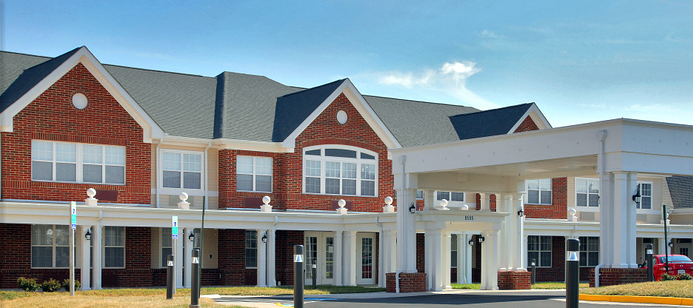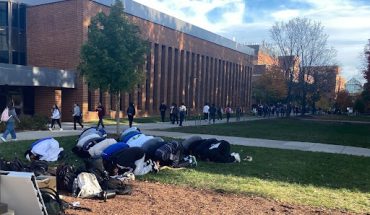A team of social work professors is studying how poetry, songs and even Play-Doh can improve the mood and memory of the elderly.
Professor of Social Work Dr. Holly Matto is leading the research at Birmingham Green, an assisted living facility in Manassas, Va. Matto and her team are working off of a two-year, $25,000 grant from the National Endowment for the Arts.
Matto and the rest of the faculty research team, Drs. Cathy Tompkins and Emily Ihara, are specifically testing the effects of MiM therapy, which stands for music, imagery and movement, on older adults who have some degree of cognitive decline.
MiM emphasizes implicit ways to make sense of the surrounding world. One of the problems with many age-related diseases, especially dementia, is the degradation of the brain’s executive functions, like language, reasoning and memory. This creates an unfamiliar, sometimes scary world for patients. Music, painting and dance awaken different types of memories, ones that are not necessarily defined by words.
“The creative arts get at that more implicit, non-verbal, sensory based memory that hasn’t degraded,” Matto said.
She explained the arts create a familiar environment, transforming a strange world into one that is recognizable.
“We can’t just logically help people work themselves out of the agitated state,” Matto said. “We have to kind of create a different space for them that makes more sense, that’s more familiar, and that might be through music, through art or through Play-Doh.”
The primary focus of the study is not whether creative arts can improve explicit memory or cognition, although the professors will conduct cognitive assessments on the participants. Matto said the team expects to see more results in terms of changes in mood and behavior regulation. Matto said the study timeline is not long enough to procure solid evidence for cognitive improvements.
Even though cognition results are not the main focus, Matto said the research team is conducting the assessments because the literature suggests creative arts therapy may improve cognition. Also, Matto believes improvements in mood may be correlated with improvements in cognition.
“I see them as all intertwined,” Matto said. “I do think cognition can be influenced by emotion and social interaction.”
The team is emphasizing emotional states and behavioral control because improvement in those areas will likely improve the daily life of residents. Matto explained that certain aspects of assisted living are sometimes overlooked, and those aspects could create greater irritation with some dementia symptoms.
“In long term care facilities where isolation, depression and minimal social interaction can be the norm, activities and groups that bring people together and help them connect in meaningful ways can lead to enhanced mood for the resident, as well as enhanced morale for the residential community,” Matto said.
Matto, Tompkins and Ihara are also addressing a gap in the research of creative arts therapy. Matto said the majority of previous studies have examined similar groups of people. In other words, relatively poor persons are not prominent in the research; the same goes for racially diverse populations.
“Most of the current studies out there have looked at creative arts with demographically homogenous populations,” Matto said. “Our study expands the reach of the creative arts to a very low income and demographically diverse older adult population.”
Absence of those populations in the research means there is a lack of evidence that MiM therapy will be effective for those particular groups of people. Matto says working with lower-income and more racially diverse adults could provide a basis for them to receive this kind of treatment.
“We’re trying to see if this will benefit populations for who it has not been examined,” Matto said. “Those benefits may be then equally applied to preventing progression [of disease] and enhancing health and well-being for populations that are vulnerable or more marginalized and maybe don’t get the kinds of treatments that other more well resourced facilities would get.”
This goal of research participant diversity is one reason Matto said Birmingham Green was an ideal place to conduct the study.
“The facility itself is kind of rare in that it serves a very low income and racially diverse population of older adults,” Matto said.
Birmingham Green is a Health Center Commission which includes the counties of Prince William, Fairfax, Fauquier, Loudoun and the city of Alexandria. It is the Northern Virginia Health Center Commission, a non-profit organization. Joan Thomas, director of Community Relations at Birmingham Green, said the facility is a descendent of an alms house and has never stopped serving less fortunate members of the community.
“Our mission is to serve the under-served,” Thomas said.
“We providing housing and services for folks that may not have had success elsewhere,” Thomas said. “We have folks that have a lot of mental health challenges, and sometimes I think other facilities may be afraid of that. We’re not.”




